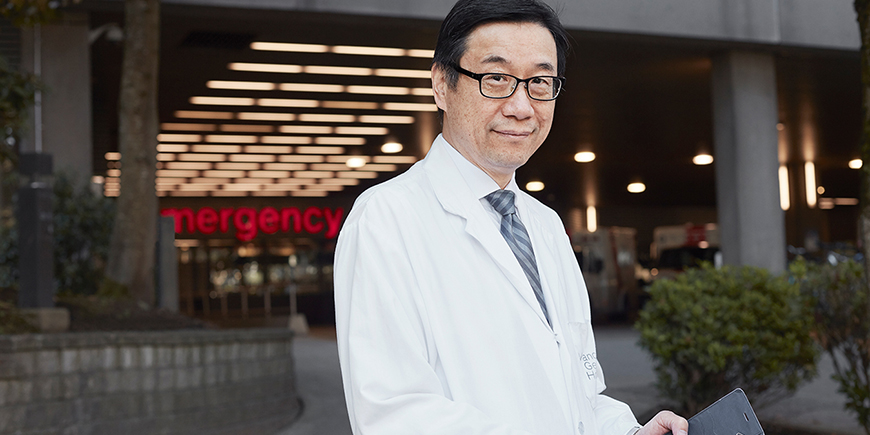Raising digital health literacy
November 9, 2018

“Right now there is an important opportunity for us to improve Canadian digital health literacy so that health professionals and patients know how to best use the technologies we currently have.”
As far as medical monitoring equipment goes, the tools are pretty basic — a blood pressure cuff, a pulse oximeter, a scale and a computer tablet. But in the hands of a patient, Dr. Kendall Ho thinks they can be revolutionary.
Dr. Ho, an emergency physician at Vancouver General Hospital, is trying to raise that literacy through a four-year study called TEC4Home, where heart failure patients monitor their own health at home.
Here’s how: For 60 days after their discharge from hospital, patients use those four pieces of equipment to measure their biometric data and monitor their symptoms. Each day, a nurse reviews the information remotely, contacting the patient as needed. The nurse also alerts the patient’s family doctor if the patient needs additional care, such as a change in medication.
“What we’re hoping is that when patients are optimizing their own self-management, when they know how to handle their own fluids and exercise and when they also have a nurse coach them, this will help patients avoid symptoms — like shortness of breath — that lead to emergency department visits,” says Dr. Ho.
According to the Canadian Institute for Health Information (CIHI), patients with heart failure have the highest readmission rate to hospital. One in five will return to the emergency department and be readmitted within 30 days of discharge. Dr. Ho says TEC4Home could be a cost-effective way to decrease that rate and reduce overcrowding in emergency departments.
“Patients are saying this is the best I’ve felt in two years. I feel very positive that I can manage my own health, I can actually look at my own indices and understand my body.”
“I want to show that we can support patients after discharge so they can convalesce better and stay at home with a high level of care,” says Dr. Ho.
Phase one of TEC4Home, which involved 70 patients, was limited to three hospitals in British Columbia, with no control group. The goal was simply to test the equipment and the remote monitoring.
Ten months later, Dr. Ho found a 59% reduction in readmissions to hospital within the first 90 days after discharge and a 44% reduction in emergency department visits. For those who did need to be readmitted, Dr. Ho reports their length of stay was cut nearly in half (44%).
Though the initial sample size was small, Dr. Ho is happy with the preliminary results.
“As a clinician I’m very excited because patients are saying, ‘This is the best I’ve felt in two years. I feel very positive that I can manage my own health; I can actually look at my own indices and understand my body.’”
Recruiting for phase two of the project started in August 2018.
Phase two is a much larger 18-month study and will involve hospitals in 19 communities throughout the province, from cities like Abbotsford to the small town of Lillooet. Nine hundred patients with heart failure will take part: half will receive regular care in their community, and the other half will receive regular care plus home health monitoring. Dr. Ho hopes this sample size will help him detect at least a 10% difference in readmission rates between the two groups.
Dr. Ho is aware there might be some challenges with the technology, such as patients connecting the equipment incorrectly or reading the data wrong. For Dr. Ho, it’s all part of teaching patients how to manage their digital health.
“We really need to support patients and the general public to know how to best use these technologies for their own health and wellness.”
The opinions stated by Physician Changemakers are made in a personal capacity and do not reflect those of the Canadian Medical Association and its subsidiaries.
